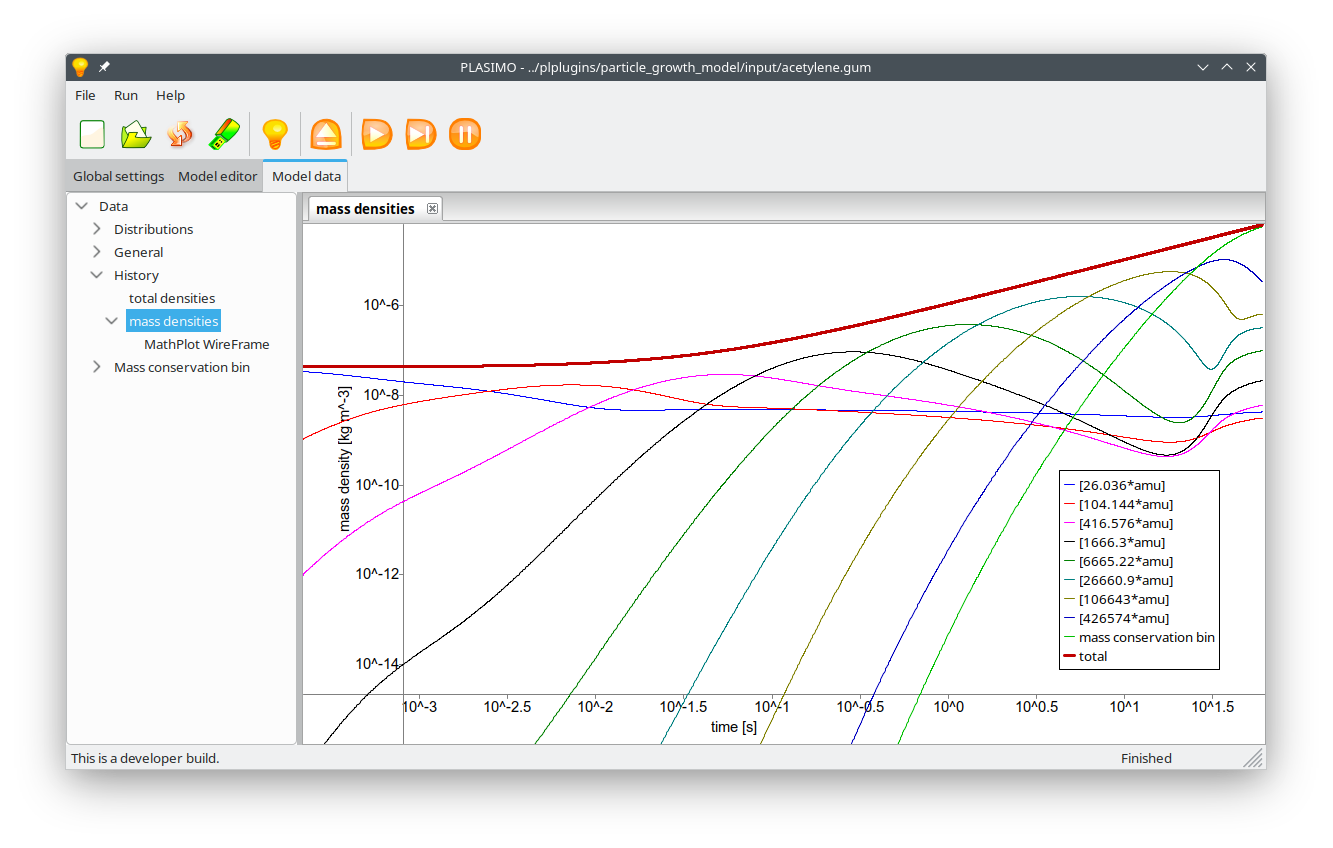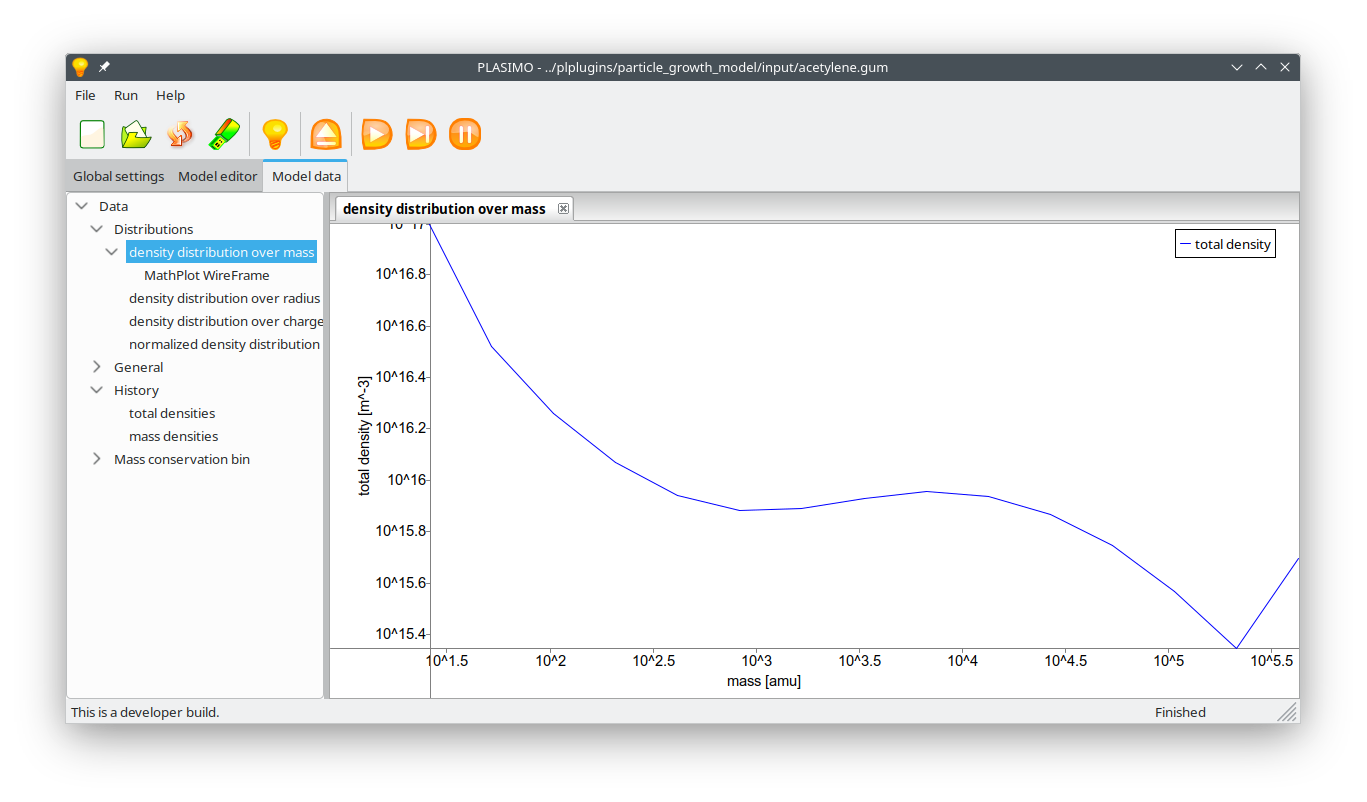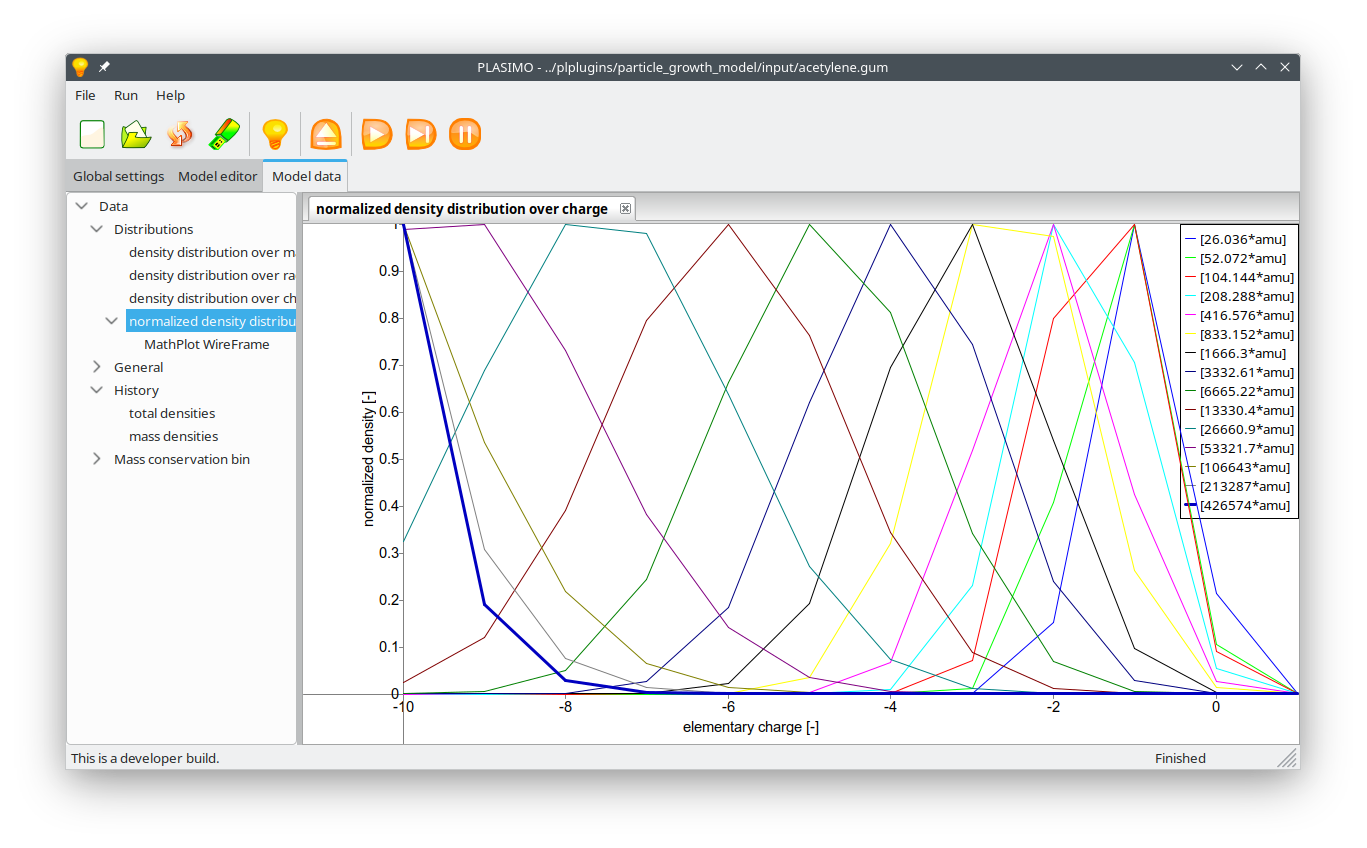PLASIMO’s Particle Growth Model describes the spatially averaged time-dependent nucleation, coagulation, charging and surface growth of dust particles.
The nucleation describes the onset of the particle growth process and it is defined as a user-specified constant nucleation rate. The coagulation processes are described in a sectional approach, meaning that the mass distribution is divided into bins with defined mass values for which an equation is solved. Each mass bin can have a charge distribution and for each mass-charge combination one equation is solved. The charging of the particles due to collisions with electrons and ions is calculated using electron and ion frequencies from the orbital motion limited (OML) theory. Optionally, surface growth can be taken into account: large particles can grow further by smaller particles sticking on their surface.
Example: Particle growth in acetylene plasma
The model describes the charge resolved mass coagulation, starting from acetylene (C2H2) with an initial density of 1e18 m−3. 15 mass bins are considered and 12 charge states for each mass bin are taken into account. Typical mass distribution plots are produced for nucleation and coagulation systems.

Figure 1: Calculated mass densities as a function of time. The total mass density in the system can be seen to increase due to the constant nucleation rate.

Figure 2: Calculated mass distribution at the end of the simulation. The smaller masses have a relatively large density due to the constant nucleation. Larger masses form arround 10 000 amu due to coagulation.

Figure 3: Normalized charge distribution at the end of the simulation.